BlockTempo holds over 250,000 BTC, and its stock price trades at a significant premium to its Net Asset Value (NAV). This inevitably reminds us of the similar high premium phenomenon that occurred with the Grayscale Bitcoin Trust (GBTC) before its conversion to an ETF in the previous cycle, which attracted a large influx of capital.
However, we are at a loss to explain why these two investment vehicles can trade at such high premiums, and we cannot provide a reasonable explanation. Even more puzzling is that MicroStrategy is able to issue a large amount of stock at a premium valuation to purchase more BTC, thereby driving up the book value per share. This seemingly "unlimited capital" loop operation is perplexing. Since launching its BTC strategy, MicroStrategy has announced five equity issuances, raising a total of $4.4 billion.
MSTR Outstanding Shares (Million)
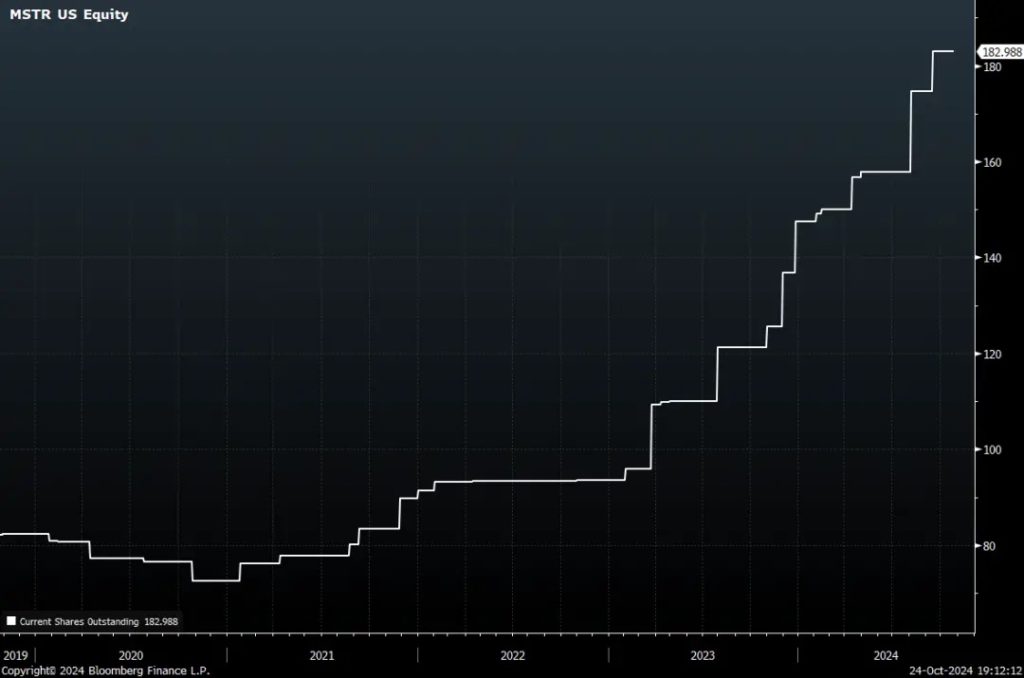
History seems to be repeating itself. MicroStrategy's CEO, Michael Saylor, is viewed by many as a "villain" in the BTC space due to some rather controversial positions, including his apparent hostility towards supporting BTC developers, his opposition to privacy technologies, and his brief but outspoken opposition to self-custody.
Similarly, Mr. Barry Silbert, who controls Grayscale, has been embroiled in controversy as the main organizer of the "New York Agreement" in 2017, which proposed a doomed proposal for the industry to abandon BTC and instead support the "SegWit2x" altcoin, which was based on a flawed and vulnerable BTC1 client.
As MicroStrategy has accumulated a large amount of BTC, with a market capitalization approaching $50 billion, people have started to express concerns. In particular, some have asked whether MicroStrategy's debt might force it to sell BTC to the market, triggering a downward price spiral? Unfortunately, due to the complexity of the debt structure, there is no simple "yes" or "no" answer to this question. Nevertheless, we have reviewed the relevant documents and will do our best to address this issue in this article.
Disclaimer
We want to declare that we are not bond traders, bond market experts, or lawyers, and we are adding this disclaimer to the article. The corporate debt market can be highly complex, and non-professionals may find it difficult to navigate. This article is likely to contain many errors. Furthermore, the article oversimplifies the products and does not address many conditions and complexities. Please do not rely on any information in this article, and if there are any errors, please feel free to point them out.
MicroStrategy's Bonds
To our knowledge, since announcing its BTC strategy, MicroStrategy has issued seven rounds of publicly traded convertible bonds, as shown below.
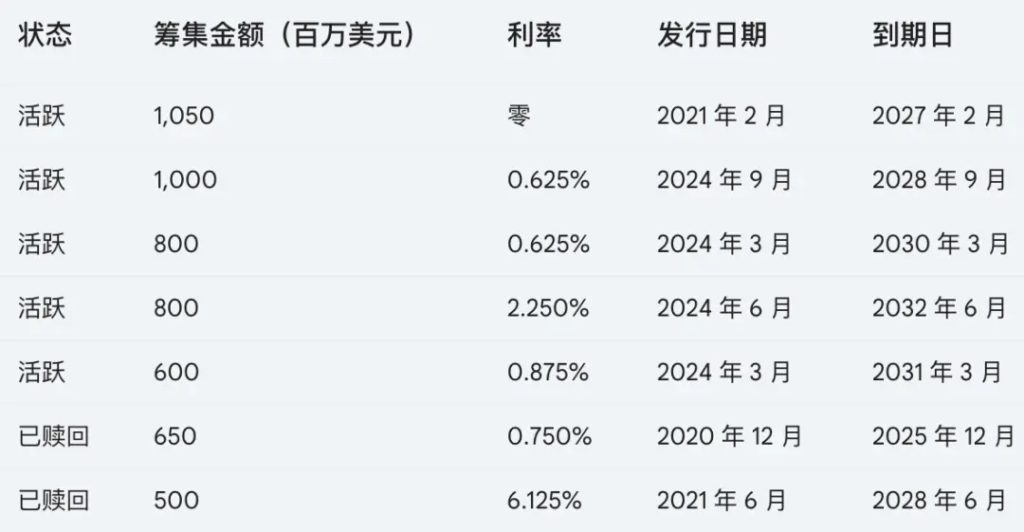
First, it's important to note that two of these bonds have been fully redeemed and are therefore not related to the outstanding debt. Thus, MicroStrategy has five outstanding bonds with a principal value of $4.25 billion. We will therefore review these five bonds.
Redemption and Conversion Options
The bond structure is relatively complex, and to our knowledge, there are four different types of conversion options available before maturity. The following diagram summarizes these conversion options for the latest instrument (the 2028 bond).
Timeline for MicroStrategy 0.625% 2028 Bonds:
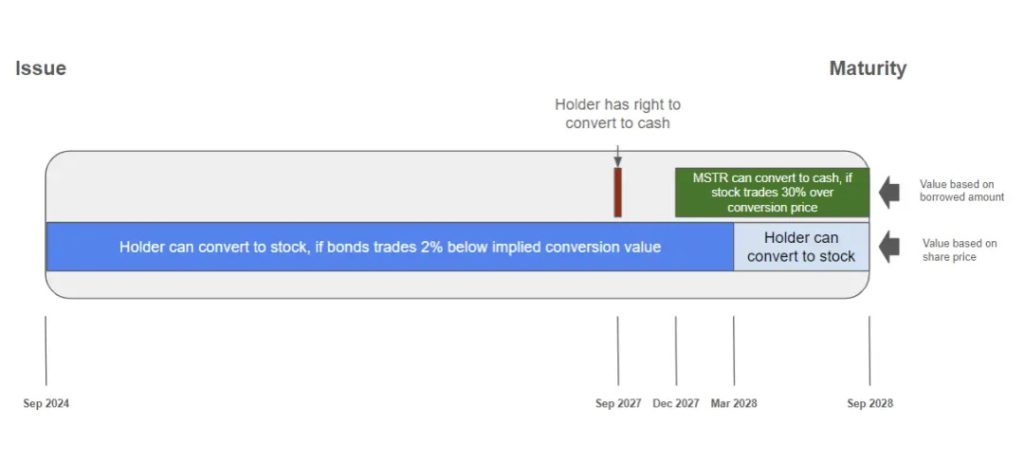
Breakdown of Convertible Bond Options:
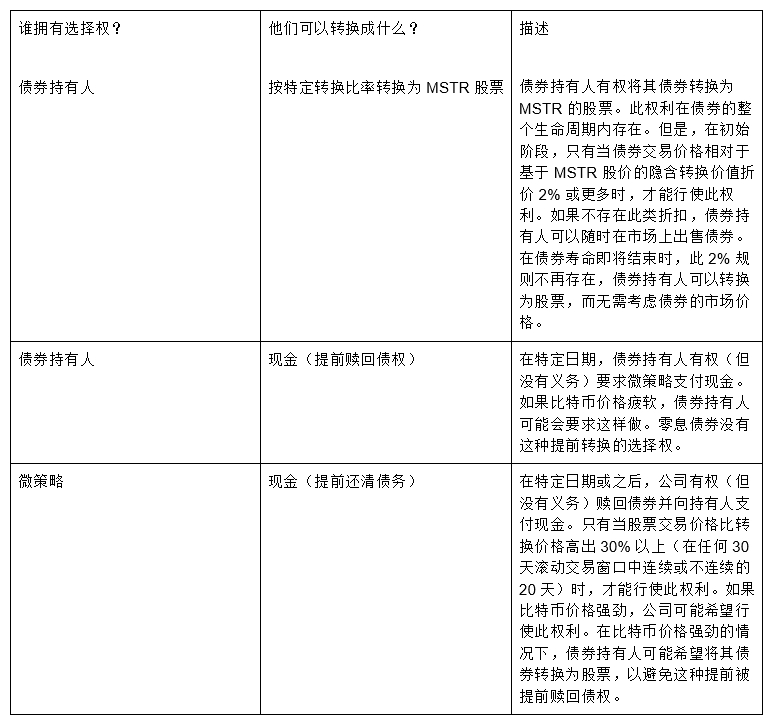
To our knowledge, except for the zero-coupon bond issued by MicroStrategy in September 2021, the mechanisms for the remaining four convertible bonds are essentially the same, with only the pricing and dates differing. The holders of the zero-coupon bond have no right to redeem for cash prior to maturity, unless there is a "fundamental change" in the business. This could be crucial if the BTC price declines.
The following table outlines the key dates related to the cash conversion options for the five bonds:
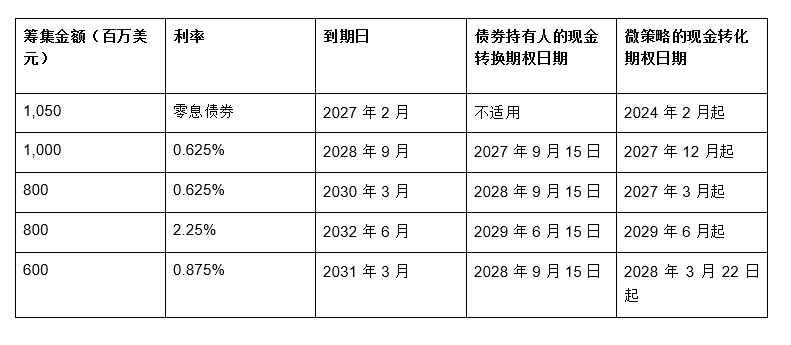
Source: Bond Offering Documents
Note: * The stock must trade at a price that is at least 130% of the conversion price for at least 20 trading days (whether or not consecutive) within any 30-day trading window
Microstrategy's Conversion Rights
It is important to note that for the zero-coupon bonds, Microstrategy's cash option date in February 2024 has already passed. The conversion price is $143.25, and a 30% premium on this basis is $186.23. The current MSTR stock price is $214, which is much higher than this price.
However, in the past 30 trading days, it has only been above this price for 11 days. Therefore, this option is about to take effect, but is not yet exercisable. Exercising this option would create value for MSTR shareholders, but the bondholders are likely to be able to prevent this by exercising their conversion rights.
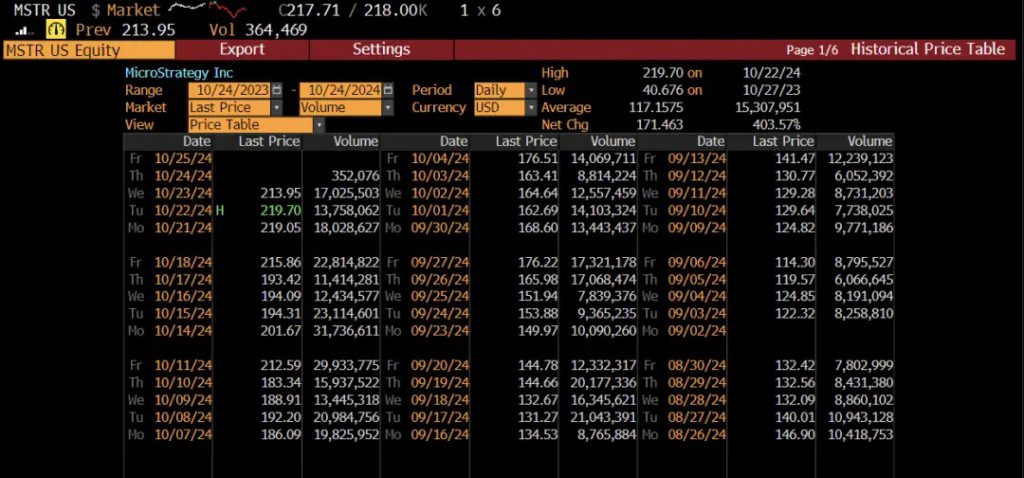
These complex factors make the bond valuation quite difficult, as convertible bonds have multiple potential outcomes. However, many creditors may be experienced professional bond investors who have models to perform these calculations.
Bond Interest Payments
Of the five outstanding bonds, four carry interest payments. These coupon payments are cash liabilities, and in theory Microstrategy may be forced to sell BTC to fulfill the payment obligations.
However, given the relatively low interest rates, and the fact that its traditional software business is able to generate ample free cash flow to cover the interest costs, even a sharp drop in BTC price would not be enough to force the company to sell BTC to pay the bond interest. In summary, we believe the interest costs will not force Microstrategy to sell BTC.
Conclusion
Microstrategy's debt size is $4.25 billion, which is based on its borrowed principal. At the same time, the company's current market capitalization is as high as $43 billion, and the value of its BTC holdings is $17 billion. It can be seen that the bonds do not account for a high proportion of Microstrategy's capital structure.
However, if the BTC price experiences a significant drop, for example to around $15,000 per coin, and Microstrategy is unable to borrow further, then analysts may need to consider the "forced liquidation" of BTC.
However, the potential timing of this forced liquidation will be concentrated around the maturity dates and option exercise dates mentioned in this article, which are spread between 2027 and 2031 and are very specific. Therefore, even if BTC does drop to around $15,000, we believe the likelihood of Microstrategy being forced to sell BTC to repay its bonds is still relatively low.
Although it is unlikely that Microstrategy will be forced to sell BTC, we believe it is more likely that the company will proactively sell BTC out of consideration for shareholder value maximization. Currently, Microstrategy's stock price has a huge premium over its net asset value.
Once this premium disappears or even becomes a discount (which is almost inevitable), and the bonds are about to mature, selling BTC to raise funds to repay the debt will become the best choice to serve the interests of shareholders.
However, as long as the stock price maintains a premium, Microstrategy can continue to operate this type of "revolving loan" using this, and there is no reason to sell BTC. Of course, this state of huge premium cannot last forever.
Additionally, it should be noted that if Microstrategy's stock price can continue to maintain a premium, and the market demand for MSTR bonds remains strong, the company may issue more debt. This will increase its debt risk and the possibility of being forced to sell in the event of a BTC price crash.
But for now, Microstrategy's leverage is relatively low, and its liquidation risk is also at a relatively low level.







